It doesn’t matter if you’re just beginning or are an experienced player. We all need to build finger dexterity for guitar! In this article, I’ll reveal the exercises that can help to move your fingers smoothly across the fretboard and take your dexterity to the next level!
I’ve used these exercises over the past forty years to help me master complex solos. Keep reading to learn more!
You can use the table of contents below to take you to the area that interests you. Click on the little box to open it, and then click on the section of the article you want to read, or you can read from start to finish if you want the full finger dexterity experience!
If you’re in a hurry, you can click here to go directly to my finger dexterity exercises.
The Short Answer
Daily finger warm-up and dexterity exercises are essential to improve your ability to play great rhythm and lead guitar in any musical style. Developing a routine using the correct exercises is essential to achieve good progress. Always practice with a metronome at a speed that allows you to play accurately, then slowly increase the speed to the proper tempo.
Keep On Reading (Below) To Learn More
What Is Finger Dexterity?
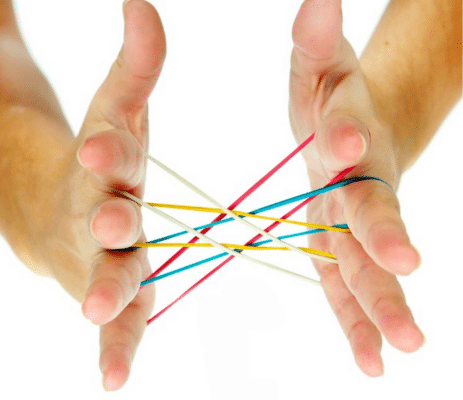
Finger dexterity is the ability to move the fingers on both hands quickly and accurately. We use finger dexterity for everything we do. The quicker and more independently our fingers move, the better we can become at doing repetitive tasks.
Studies have shown that females have better finger dexterity than males. So why aren’t there more female guitar players, especially since the well-known female players are totally awesome? The good news is that the ratio of female to male guitar players is steadily improving!
Why Is Finger Dexterity Important?
Finger dexterity is an essential skill to develop because complex chords and solos require excellent fretboard and picking skills.
So, contrary to popular belief, great guitar players develop impressive dexterity in the picking hand, too! This applies to finger pickers, plectrum (pick) players, and players that use a “hybrid” guitar picking technique with a plectrum and the fingers.
If you don’t believe me, let’s consider two players that have developed awesome right (picking) hand techniques.
Yngwie Malmsteen uses a guitar pick in a way that would dazzle even the most seasoned player. Talk about high-speed picking precision! I often find myself watching his picking hand more than his fretting hand during concert video close-ups.

Jeff Beck ditched the guitar pick years ago. What he could do by fingerpicking the strings while controlling the volume & tone knobs and the whammy bar was nothing short of amazing! His right-hand fingerpicking and “sound-molding” techniques made him virtually uncopyable!

Playing the guitar requires a lot of finger dexterity. If you don’t develop dexterity in both hands, you won’t be able to accurately produce a clean, clear sound when you are fretting and picking the guitar strings quickly.
The best way to develop and maintain finger dexterity is by creating an exercise routine and practicing it consistently while using a metronome.
Dexterity Versus Finger Strength
Dexterity and finger strength are two different things, but they work together to help make your playing great! Here’s the low down on what they are and why they’re important.
Finger Dexterity
Finger dexterity is the ability to move your fingers quickly and accurately. Dexterity can be improved by performing a variety of exercises. For example, practicing scales or arpeggios slowly with a metronome and then building up the speed can help increase the dexterity in both hands and fingers.
Metal players that shred notes all over the neck at top speeds typically spend hours building up their finger dexterity.
Finger Strength
Finger strength gives you the ability to manipulate the guitar strings properly. This could be something as simple as pressing the strings down onto the frets or holding the pick without it slipping between your finger and thumb.
Bending the strings or doing finger vibrato requires more strength than just pushing them down onto the fretboard.
Thicker gauge strings or a guitar with a higher action (string height) require more finger strength.
Fingertip callus formation helps you apply finger strength without hurting or damaging your skin.
Finger Dexterity Uses Hand And Wrist Movement!
Although finger dexterity comes from the four fingers and thumb, proper positioning of the hand and wrist are essential for allowing the fingers to move quickly and accurately. So, we need to work with dexterity exercises that use the muscles of the left and right fingers, hands, and wrists.
As your fretting (typically left) hand moves up and down the guitar neck, the position of your hand and wrist needs to change to accommodate your finger movement. Your left forearm also moves toward and away from your body. Learning the proper hand and wrist positions plays a big part in finger dexterity!
Right (picking) finger, hand, and wrist muscles need to move in particular patterns regardless of your picking style! The right forearm needs to move up and down and rotate freely, depending on your playing style.
Developing Fretting Vs. Picking Finger Dexterity
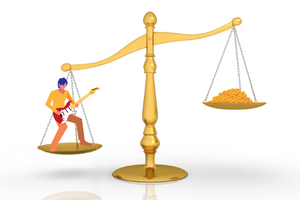
Finger dexterity on the right and left sides should be built up simultaneously. Most players that use a pick (plectrum) tend to favor the development of fretting hand dexterity, but finger-pickers spend more time developing dexterity in the right hand.
Two-handed fretboard tappers tend to do a good job of developing finger dexterity and strength on both sides.
I would like you to focus primarily on what works best for your playing style, but please pay attention to developing finger dexterity basics in both hands.
Finger And Hand Warmups
Before you begin dexterity exercises for the guitar, I recommend doing these four exercises to warm up your hands and fingers. They will prepare your muscles for playing and can help to prevent injuries.
Finger Stretches
Begin by holding one hand in front of you with the palm facing down. Then, use the other hand to gently pull each finger up and hold it for a few seconds before releasing it. Don’t pull up too far. Stop if it begins to feel uncomfortable.
Finger Taps
Place one hand on a flat surface (like a table), palm down. Raise each finger and thumb up as high as you can without moving the other ones, and then tap it back down onto the table. Repeat the exercise with your other hand.
Finger Circles
Hold one hand out in front of you, palm down, and make a circular motion with each finger and thumb, first clockwise and then counter-clockwise. Flip the hand over (palm up) and repeat the process. Do it again with the other hand.
Hand And Wrist Rotation
Make a fist with your hand and rotate your wrist in a circular motion, first clockwise, then clockwise, and then in an alternating clockwise and counterclockwise motion. Begin slow and gradually pick up speed.
Finger Dexterity Exercises
Now that your fingers are warmed up, let’s move on to exercises that can help build finger dexterity and give you more speed and accuracy.
Dexterity Band Exercises
I like using dexterity bands on the fretting (typically left) hand. They can really improve your playing! A major advantage is that they add finger resistance to your left-hand fingers while they are situated at the proper angles on the guitar neck. I have even used it on my right hand while I finger-pick. They also exercise the muscles of your fingers, hands, wrists, and forearms.
Here is the dexterity band system that I’ve been using, and I love it. D’Addario has come up with an excellent product! It really increases finger speed and fluidity, and it isn’t costly.
It’s called the D’Addario PW-DXBD-01 Finger Exerciser. Check out the image below to see how it works.
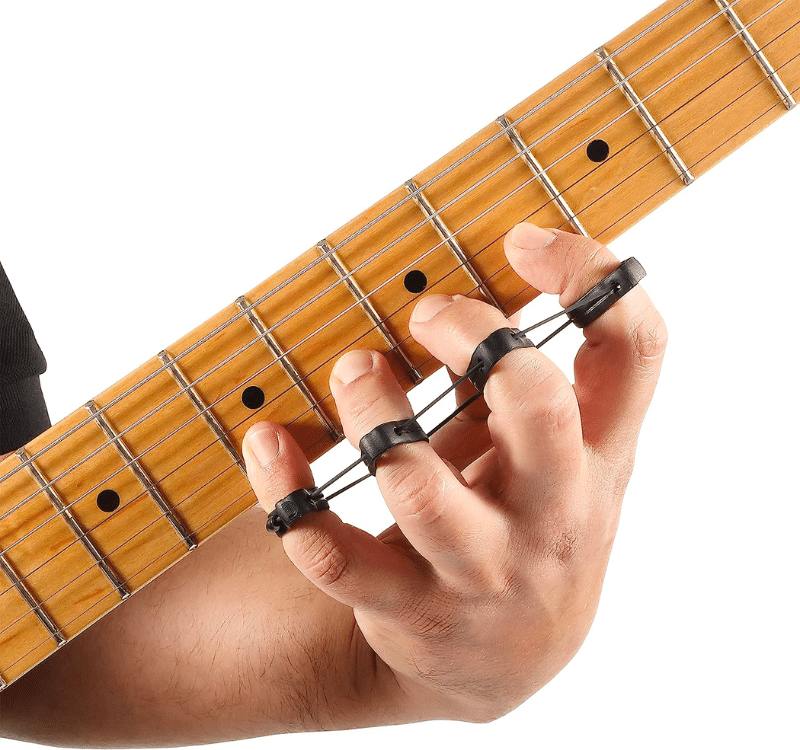
Click HERE To Check Reviews & Price On Amazon
Please don’t overdo it. Start by using it for about five minutes and gradually increase the time as needed.
Spider Walk
The spider walk can be used to improve finger dexterity, but it also increases finger strength.
This exercise works by forming “patterns” with your fingers on one string and then on different strings. You begin playing notes chromatically and then mixing up the order.
Here are the four ways you can do the spider walk.
Spider Walk With All Fingers On The Same String
Start with the 1st finger and form these patterns on the same string using all four fingers. Begin in the first four frets and move the finger patterns up the guitar neck one fret at a time and then back down again.
Don’t forget to repeat the process on each string.
Use alternate (up, down, up, down) picking, and then try it using hammer-ons and pull-offs instead of picking the strings.
So, here we go! Pick a string and stay on it until you go up and down the fretboard, then go to the next string. The first exercise uses the first (index) finger for the first fret, the second finger for the second fret, etc.
| Starting Finger | Next Finger | Next Finger | Ending Finger |
|---|---|---|---|
| 1st | 2nd | 3rd | 4th |
| 1st | 2nd | 4th | 3rd |
| 1st | 3rd | 2nd | 4th |
| 1st | 3rd | 4th | 2nd |
| 1st | 4th | 2nd | 3rd |
| 1st | 4th | 3rd | 2nd |
| ― | ― | ― | ― |
| 2nd | 1st | 3rd | 4th |
| 2nd | 1st | 4th | 3rd |
| 2nd | 3rd | 1st | 4th |
| 2nd | 3rd | 4th | 1st |
| 2nd | 4th | 1st | 3rd |
| 2nd | 4th | 3rd | 1st |
| ― | ― | ― | ― |
| 3rd | 1st | 2nd | 4th |
| 3rd | 1st | 4th | 2nd |
| 3rd | 2nd | 1st | 4th |
| 3rd | 2nd | 4th | 1st |
| 3rd | 4th | 1st | 2nd |
| 3rd | 4th | 2nd | 1st |
| ― | ― | ― | ― |
| 4th | 1st | 2nd | 3rd |
| 4th | 1st | 3rd | 2nd |
| 4th | 2nd | 1st | 3rd |
| 4th | 2nd | 3rd | 1st |
| 4th | 3rd | 1st | 2nd |
| 4th | 3rd | 2nd | 1st |
Spider Walk On Different Strings
Once you have mastered the exercises in the table above, use the same finger patterns, but this time use more than one string at a time.
For example, using the pattern 1st, 2nd, 3rd, 4th:
| Exercise Number | 1st Finger (1st Fret) | 2nd Finger (2nd Fret) | 3rd finger (3rd Fret) | 4th Finger (4th Fret) |
|---|---|---|---|---|
| Exercise One: | High-E String | B String | G string | D String |
| Exercise Two: | B String | G String | D String | A String |
| Exercise Three: | G String | D String | A String | Low-E String |
Then, reverse the patterns:
| Exercise Number | 4th Finger (4th Fret) | 3rd Finger (3rd Fret) | 2nd finger (2nd Fret) | 1st Finger (1st Fret) |
|---|---|---|---|---|
| Exercise One: | Low-E String | A String | D String | G String |
| Exercise Two: | A String | D String | G String | B String |
| Exercise Three: | D String | G string | B String | High-E String |
After you master this, move the patterns up and down the fretboard, and then try using the other four-finger patterns in the first table (1st, 2nd, 4th, 3rd, then 1st, 3rd, 2nd, 4th, etc.).
Spider Walk With Finger Stretching On The Same String
Adding a finger stretch between two fingers on an exercise pattern can build even more finger strength.
For example, using the high-E string, starting at the fifth fret.
| 5th Fret | 6th Fret | 7th Fret | 8th Fret | 9th Fret |
|---|---|---|---|---|
| 1st Finger | “Skip Fret” | 2nd Finger | 3rd Finger | 4th Finger |
| 1st Finger | 2nd Finger | “Skip Fret” | 3rd Finger | 4th Finger |
| 1st Finger | 2nd Finger | 3rd Finger | “Skip Fret” | 4th Finger |
Then, reverse the patterns:
| 9th Fret | 8th Fret | 7th Fret | 6th Fret | 5th Fret |
|---|---|---|---|---|
| 4th Finger | “Skip Fret” | 3rd Finger | 2nd Finger | 1st Finger |
| 4th Finger | 3rd Finger | “Skip Fret” | 2nd Finger | 1st finger |
| 4th Finger | 3rd Finger | 2nd Finger | “Skip Fret” | 1st Finger |
Now, do the same finger patterns for each of the other 5 (B, G, D, A, and Low-E) strings.
Once you have these mastered, play them up and down the neck. The lower down the neck you begin, the bigger the finger stretch will be, and vice versa.
Spider Walk Using Random Patterns On Different Strings
Once you get good at the spider walk, you can play random patterns or arpeggios that use notes on different strings. You know the drill by now; move everything up and down the fretboard.
Stop and rest if you develop pain, tingling, or numbness in your fingers, hand, or wrist. Remember, tomorrow is another day, so don’t overdo it!
Someday, I’ll make a YouTube video showing how to do this and link it to this article.
Hammer-Ons, Pull-Offs, Trills, And Finger Tapping
Practice playing with a guitar pick (using alternate picking) and without a pick, using hammer-ons, pull-offs, trills, and finger tapping. A trill uses two fingers and rapidly alternates between two adjacent notes on the same string.
Eddie Van Halen was the inventor and king of finger tapping for Rock and Metal. Check his videos on YouTube for some great tapping ideas.
These techniques are a great way to build finger dexterity and strength too!
Tips For Building Finger Dexterity
In addition to the exercises above, here are some things you can do to help speed up the process of developing dexterity on the guitar and avoid problems along the way.
Practice consistently for at least 15 to 30 minutes a day. This is essential to developing good finger dexterity! However, don’t overdo it. It’s important to listen to your body and take breaks! So, stop immediately if you experience pain in your fingers, hand, or wrist.
Focus on your technique. No matter how much dexterity you develop and how fast you can play, inaccurate playing with your fretting or picking hand never sounds good! It can be hard to break bad habits, so try not to develop them in the first place! Good technique can also prevent injuries like tendonitis, so always use the correct hand and finger positions.
Don’t try playing music that is too complex or fast before you’ve built up adequate finger dexterity and strength.
Practice With A Metronome!
A metronome is crucial when it comes to building finger dexterity, especially when learning something new! Start slow and build it up to speed, but keep it precise and on time. One of the biggest problems I see with beginning students is that they want to play faster from the first day they get a guitar.
If you don’t have a metronome, you can download a free digital app for your smartphone or tap your foot as you play.
Combing Dexterity And Strength Exercises

All great players have learned the proper way to combine finger dexterity with strength. Guitarists like Eric Clapton and Steve Vai have the finger dexterity and strength to play all over the neck and sound incredible! You can play like them, but you have to practice, practice, practice!
Always do the dexterity exercises first and then begin the exercises for finger strengthening. This will prevent your fingers, hand, and wrist from becoming too sore or fatigued, which can make the dexterity exercises more difficult to perform.
Finger strength does not mean the application of “brute force” to the guitar neck, which can be the enemy of dexterity. So, do your finger strength exercises with that in mind.
Anything that helps increase finger independence will improve dexterity. The spider walk, hammer-ons, pull-offs, trills, finger skipping exercises, and finger tapping are all helpful in this regard.
Learning to play chord progressions using the Circle of Fifths and CAGED shapes, as well as playing scales and arpeggios, all require finger dexterity and strength.
Use That Pinky!
Get used to using your fifth finger when fretting notes on the guitar neck! Although this is the hardest finger to build dexterity and strengthen, it’s worth the effort! Some of the guitar greats don’t use their pinky, but you’ll find that life will become much easier by using it every chance you get.
I tried to avoid using my left pinky when I first started playing the guitar. However, I soon realized that I was severely limiting my playing potential. Using all four fingers on the fretboard made my solos much more fluid and precise and opened up new fingering patterns that had a tremendously positive effect on the way I composed music!
Trust me; you’ll wonder how you ever got along without using your pinky!
Don’t Overdo It!
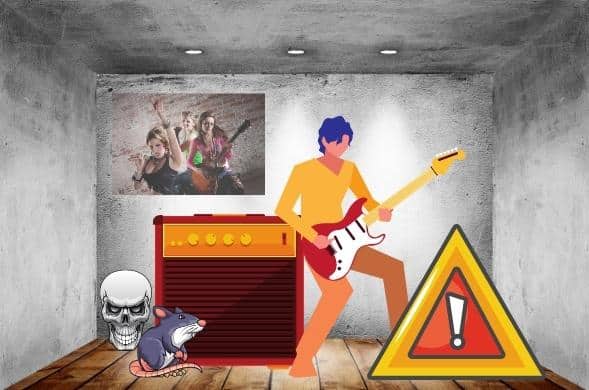
Here are a few important things to be aware of as you work on your finger strength.
Always do the warm-up exercises before you start the finger exercises. Start slow and limit your exercise time. Five to fifteen minutes is good when first beginning. After that, you can slowly increase your exercise time as needed.
It’s not a race! Overdoing it will only set you back. Instead, begin with simple exercises and gradually add more. You have to give your fingers time to develop calluses to prevent pain and damage to your skin. You can speed up the exercises when you can play them accurately and comfortably.
Stop immediately if you develop any pain, tingling, numbness, or swelling in your fingers, hands, wrists, or forearms! Also, check with your doctor before starting these exercises if you have a history of medical problems involving your skin, bones, or joints in your upper body.
Frequently Asked Questions

Here are some of the questions I get asked about finger dexterity.
If your question does not appear here, please put it in the comments, and I will get right back to you with an answer.
How Long Does It Take For Fingers To Get Used To Guitar?
It depends on things like the warm-up and dexterity exercises you do, how much time you practice, the kind of music you play, and the type of guitar you use.
Everyone can acquire guitar dexterity at a different rate, so don’t compare yourself to other players. Instead, it’s better to set playing goals and work at your own speed to acquire them.
Is Finger Dexterity Necessary For Guitar?
Yes, to a certain extent, it is! The more technically challenging the music is, the more dexterity you will need. Players that use open chords to accompany themselves while they sing typically require less dexterity than Metal players that shred all over the neck.
It doesn’t mean that one player is better than the other, just different in performance approach. So, plan to develop the dexterity skills required for the music you want to play.
Can Finger Dexterity Exercises Be Practiced On An Acoustic Guitar?
Yes, they can. However, while acoustic guitars are typically better for building finger strength, electric guitars can make it easier to develop dexterity because they are usually easier to play.
Can My Fingers Be Too Short To Play Guitar?
No, that’s a myth! It’s true that big hands and long fingers can make it easier to learn things like vibrato, but the length of your fingers should not stop you from playing the music of your choice. It’s all a matter of practice!
What Improves Hand Dexterity On Guitar?
The more you play, the more your hand dexterity will improve, especially as a beginning player! Doing finger dexterity exercises will help accelerate the process.
Are There Any Shortcuts To Building Finger Dexterity For Guitar?
There are no “magic” shortcuts for building finger dexterity. The more you practice, the quicker it will happen. Do dexterity exercises and always play with a metronome, starting slowly and building speed accurately and precisely!
Final Thoughts

I hope you found this article on how to build finger dexterity for guitar helpful.
Finger dexterity is the ability to move the fingers on both hands quickly and accurately. Building finger dexterity for guitar is essential for any player, especially beginners!
Finger dexterity will help you play complex chords and solos that require excellent fretboard and picking skills. Dexterity and finger strength are two different things, but they work together to help make your playing great!
Although finger dexterity comes from the four fingers and thumb, proper positioning of the hand and wrist are essential for allowing the fingers to move quickly and accurately.
It’s a good idea to begin with finger and hand warmups before starting dexterity exercises. Combining finger dexterity and strength exercises is one of the best ways to help improve your guitar playing!
However, it’s essential not to overdo it. Start slow with a limited number of exercises and slowly add more. Stop immediately if you develop pain, tingling, numbness, or swelling in your fingers, hands, wrists, or forearms!
I recommend you begin using your pinky finger when you first start playing guitar to help build dexterity and strength in this finger, along with the others!

Here’s a video from Guitar Center that demonstrates how to improve finger dexterity (and strength) by doing hammer-ons, pull-offs, alternate picking, and the “Crab walk.”
The crab walk demonstrated here is a limited form of the spider walk discussed above, which gives you the tables showing all the possible four-finger combinations.
Related Article ➡ Build Finger Strength For Guitar – Play It Like You Mean It!
Tell Me What You Think

Please leave a comment below if you enjoyed this article, have any questions about finger dexterity, or want to give your point of view. I will be happy to help you.
- Are you using your pinky finger when you play the guitar?
- Do you have a particular exercise to help improve pinky dexterity?
- What routine are you using to warm up and do finger exercises?
- Do you think an acoustic guitar is a good way to improve finger dexterity?
- What else is on your mind?

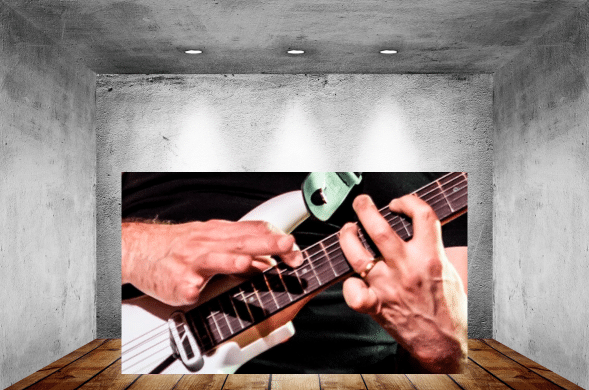

When I started playing the guitar, my experience with learning the typewriter made me try to improve my accuracy and speed with my guitar. They are two different pieces of equipment, but both need speed and accuracy for one to be efficient. Thank you for coming up with a spider walk for finger dexterity. I will do some practice hoping I get better with my guitar
Hi, Parameter
Thank You for your comments!
Hey, that’s a cool analogy, comparing a typewriter to a guitar, but what you say is true. Everything we do in life requires some degree of manual dexterity.
Try the warm-up and dexterity exercises I outlined in the article, and I think you’ll see some progressive improvement. Don’t forget to always practice using a metronome, which is one of the best ways of learning to lock into the tempo when you play.
Best!
Frank 🎸
I’m not the most experienced guitarist, but I know something and I can offer some of my experience in that. The most important thing, as we all know, is the dexterity of the fingers when moving the fingers quickly and precisely, for performing different guitar techniques such as finger picking or using a pick. Before every gig, it is important to warm up your fingers to avoid unwanted injuries. One of the more popular warm-up exercises is the spider exercise, we bend our fingers on adjacent frets and then raise and lower them one by one, scales can also be practiced to improve finger dexterity. Focus on both hands and pay more attention to exercises involving both hands to develop balanced finger dexterity. As with any exercise, you need to be patient and persistent with this one, everything in life requires regular exercise and progress will be made over time.
Hi, Andrej
Thank You for your comments!
Yes, finger dexterity and strength exercises followed by a structured practice program are crucial to making excellent progress on the guitar or any other instrument.
Always practice with a metronome or simply tap your foot in time with the music.
Rock On! 🤘
Frank 🎸